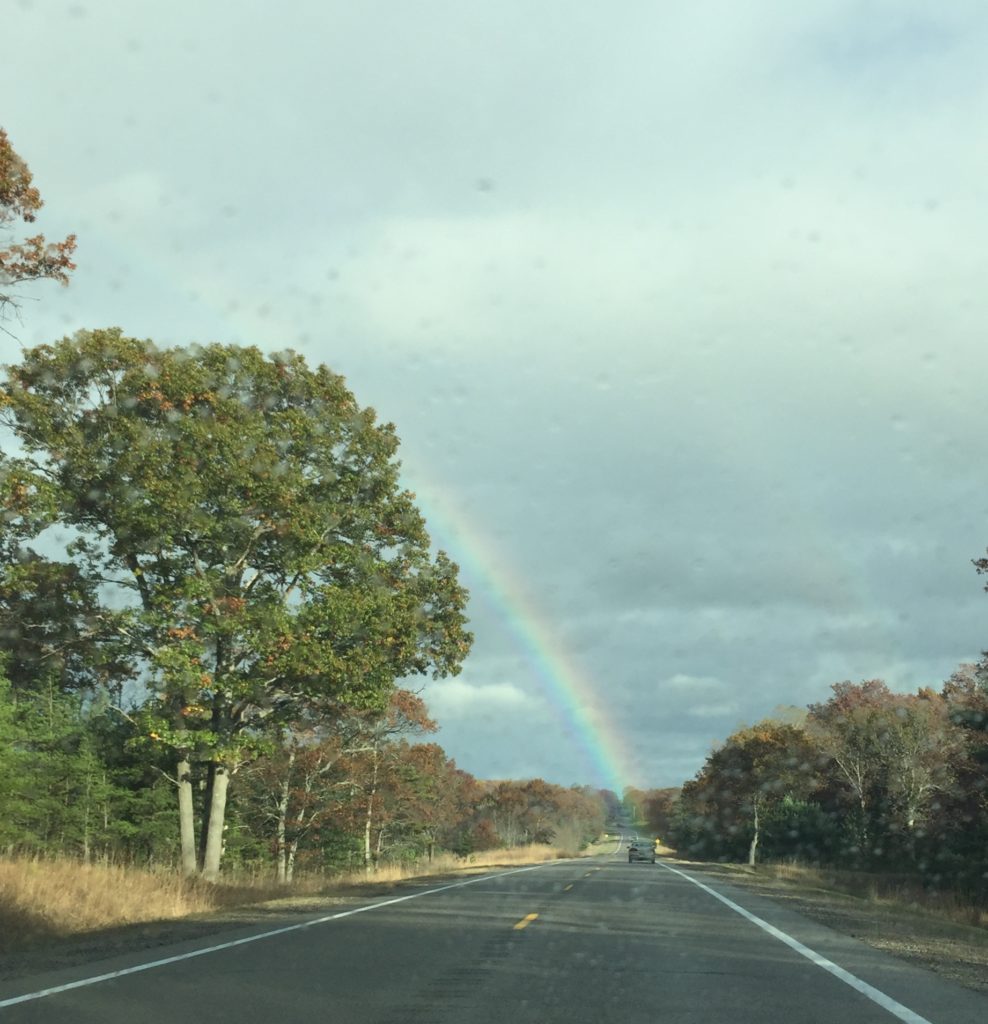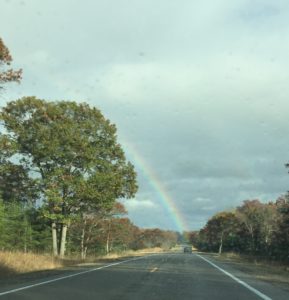
In the Field: CWD and TB Awareness

by Anna Miterling, Wildlife Cooperative Coordinator, MUCC
Rainbows remind me of hope. I was driving up to Alpena to talk about managing deer in the TB area on Saturday when my friend Morgan and I saw this rainbow. It has been a rough week, a lot of focus on disease. While there is a lot to be disappointed about in the deer world right now, this rainbow reminded me there is also a lot to be hopeful for too.
Last week I went to the DNR CWD meeting in Montcalm County. I was happy to see that over 400 hunters showed up to learn more about the positive deer that were found in their area and what they could do about it. The gist being that if you live in a CWD area, simply bring your deer in to be checked! The DNR has a great site that outlines a lot of information about CWD at www.mi.gov/cwd.
I also went to a cooperative meeting in the new CWD area on Friday night to help provide a background on the disease and walk through the importance of them banding together to combat this. While there were differing approaches to how individuals want to respond to the threat of CWD in their woods, the common ground is that they don’t want CWD there, and action of some kind is required. My basic recommendations include – harvest a few more does than planned and submit heads for testing in areas of known CWD. DNR is not going to come in and decimate your herd, but reducing the density and getting samples submitted will only improve the ability to reduce potential spread. Don’t make this political, and don’t over think it. Keep it simple and let’s do our part.
On Saturday, I went up to Alpena to give a presentation at an event the Conservation District put on. My role was to explain why habitat management along with managing deer numbers is crucial, especially in a TB area (or any disease for that matter). The northeast part of Michigan has a few special grant options in efforts to reduce deer density, increase TB testing, and improve habitat conditions. The purpose of the event was to outline the Habitat Improvement Program (HIP) grant. If you would like more information and you live or own land in the TB area, please contact your local Conservation District.
Forest management is crucial, and mature stands of trees do not provide habitat value for deer, as they depend on regeneration of new growth the survive. We have a double-edged sword problem going on though. There is little regeneration for two reasons. 1) Unmanaged mature forests leave little sunlight reaching the forest floor, inhibiting new growth. 2) Unmanaged deer populations leave little ability for new growth as they eat every little sprig that comes up.
We have some solutions to offer in areas of high deer density:
a) Harvest more deer, antlerless especially. This will help reduce impacts on habitat regeneration.
b) Harvest more trees. Work with a forester to create a management plan for your woods. This will go a long way in providing some income in your pocket, as well as improving habitat conditions for wildlife as well!
c) Work with your neighbors. Doing a logging operation in a small area will draw the deer in, and decimate your ability to regenerate new growth. However, if your neighbors are also doing logging at the same time, this will help spread the impacts. In addition, working with your neighbors to track, plan, and potentially increase antlerless harvest, you can have greater impact at managing closer to a population level.
Cooperatives may be a incredible option to help with all of these factors! If you are interested in learning more, please email me at amitterling@mucc.org
